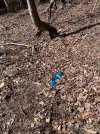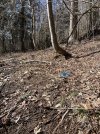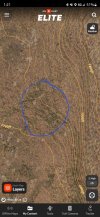People get thermals and Bernoulli effect mixed up sometimes (Dan Infalt used to at least).
Thermals are a lesser effect, but they are also good to understand.
Here's Bernoulli effect in a nutshell. Let's say you have just a ridge line (simpler situation). The ridge runs north-south.
Let's say a wind is coming from the west. The wind will be more predictable on the west side of the rise (windward side) because the wind climbs the hill like a skateboard ramp. The leeward (east side) there is a suction and the wind at many points on the ridge will travel the reverse and be east to west. It is due to the wind over the ridge creating an area of lower pressure. It is similar to a wave curling over. When the wind doesn't hit at a perpendicular to a ridge but an angle, then it causes a rolling effect where the return wind on the leeward side is more perpendicular than the wind on the windward side.
If the wind is travelling from the north on this north to south ridge, it will be more predictable because it does not do what I described on the leeward side.
To understand it all better, I would check dominant wind direction for the day in the area and then walk around with a topo map and just drop milkweed all the time and watch it. I then envisioned the wind like water flowing and the hills and mountains like rocks in the bottom of a stream influencing the water.
You eventually get some intuition for new areas and a more thorough understanding of specific spots you hunt. I have places where if I look at the weather, then I usually know what the wind will be doing but am still wrong sometimes. And of course, my single ridge example is a huge oversimplification.
Also, the strength of the wind has an effect. The stronger the wind the more the Bernoulli effect (meteorologist or something might call it another name, but it does this based upon Bernoulli's principle).
With wind predictions, I also look for changing wind directions and changing wind speeds. Variable wind speeds tend to cause less predictable wind patterns and more changes in wind direction.
Thermals modify wind movement, but I have not seen them to be the primary factor to worry about except when the wind is very still. On a moderately windy day in the mountains, I forget to even think about thermals because the wind direction seems to overpower the thermals to a large degree.
I was just breaking his chops because people on here are always talking about balloons and all they (balloons) do is piss me off because I hate seeing trash in the woods!




